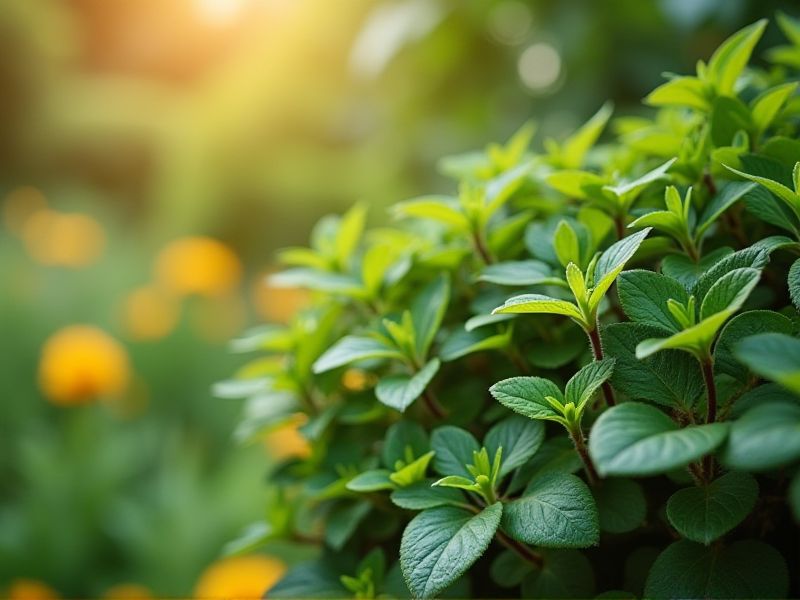
Low-maintenance shrub plants ideal for gardens include the boxwood, known for its density and ability to withstand various shaping, and the barberry, which is drought-tolerant and offers vibrant fall colors. The juniper is another excellent choice, providing year-round greenery with minimal pruning needs and adaptable to many soil types. The viburnum not only requires little maintenance but also attracts pollinators, making it beneficial for the ecosystem. Ornamental grasses, such as Miscanthus and Pennisetum, also enhance garden aesthetics without the need for constant trimming. To establish a thriving landscape, consider incorporating these resilient shrubs that blend beauty with practicality.
List of some Shrub plants that need minimal pruning
- Butterfly Bush (Buddleja davidii)
- Spicebush (Lindera benzoin)
- Boxwood (Buxus sempervirens)
- Smoke Bush (Cotinus coggygria)
- Holly (Ilex crenata)
- Viburnum (Viburnum spp.)
- Japanese Spirea (Spiraea japonica)
- Barberry (Berberis thunbergii)
- Oregon Grape (Mahonia aquifolium)
- Lilac (Syringa vulgaris)
Important things about Shrub plants that need minimal pruning
Growth Habit
Shrub plants with a natural growth habit often require minimal pruning, making them ideal for low-maintenance gardens. Varieties such as Boxwood (Buxus spp.) and Spireas thrive with their compact forms and resilience to neglect, allowing them to flourish without frequent trimming. These shrubs develop a lush appearance and maintain their shape, providing aesthetic value year-round. Selecting these hardy options can enhance your landscape while saving you time on garden upkeep.
Disease Resistance
Shrub plants characterized by disease resistance often require minimal pruning, making them ideal for low-maintenance gardens. Varieties such as Boxwood (Buxus spp.) and Juniper (Juniperus spp.) exhibit a robust natural resilience against common pests and diseases, allowing them to thrive with little intervention. These plants not only maintain their aesthetic appeal but also support local ecosystems by providing habitat for beneficial insects. Selecting disease-resistant shrubs can enhance the longevity and overall health of your landscape while reducing the need for chemical treatments.
Sunlight Requirements
Shrub plants that require minimal pruning typically thrive in full sun to partial shade, making them suitable for a variety of garden settings. Examples include the ever-popular lavender (Lavandula), which not only flourishes in bright sunlight but also attracts pollinators like bees and butterflies. Other low-maintenance options, such as spireas and junipers, showcase vibrant foliage and seasonal blooms while needing little to no pruning to maintain their shape. When selecting these shrubs, consider your local climate and soil type to ensure optimal growth and health.
Soil Preferences
Shrub plants that require minimal pruning typically thrive in well-draining soil, rich in organic matter, which enhances nutrient availability. Many of these shrubs, such as junipers and boxwoods, prefer slightly acidic to neutral pH levels, around 6.0 to 7.0, promoting optimal health and growth. It's essential to maintain consistent moisture without waterlogging, as such conditions can lead to root rot and hinder plant development. Ensuring your garden beds are mulched can help retain soil moisture while also suppressing weeds, creating an ideal environment for these low-maintenance shrubs.
Watering Needs
Shrub plants with minimal pruning requirements, such as Boxwood and Juniper, thrive best with a consistent watering routine that promotes deep root growth. It's essential to monitor soil moisture, ensuring it remains adequately damp without becoming waterlogged, as overwatering can lead to root rot. During dry spells, consider a drip irrigation system or soaker hoses to deliver moisture directly to the roots efficiently. Understanding the specific needs of each shrub species can help you tailor your watering schedule, ultimately enhancing their health and vigor.
Fertilization Frequency
Shrub plants that require minimal pruning typically benefit from fertilization once or twice a year to promote healthy growth and vibrant blooms. Early spring is an ideal time to apply a balanced slow-release fertilizer, ensuring the plant receives essential nutrients as it begins its growing season. You should also consider a light application in mid-summer to support extended flowering and foliage health. When applying fertilizer, always follow the manufacturer's instructions to prevent over-fertilization, which can harm your shrubs.
Ideal Planting Zones
When selecting shrub plants that require minimal pruning, consider species like the boxwood, holly, and spirea, which thrive in USDA hardiness zones 3 through 9. These low-maintenance shrubs maintain their shape naturally, reducing the need for extensive upkeep in your garden. To ensure optimal growth, plant them in well-drained soil and provide adequate sunlight, as most prefer full to partial sun exposure. Regular watering during dry spells will enhance their resilience and encourage healthy foliage, making them an excellent choice for busy gardeners seeking beauty with ease.
Pest Resistance
Shrub plants known for their pest resistance, such as the Barberry and Juniper, thrive with minimal pruning, allowing for low-maintenance gardening. These varieties possess natural defenses against common pests, reducing the need for chemical interventions while promoting a sustainable landscape. The resilience of these shrubs not only enhances your garden's aesthetic appeal but also supports local biodiversity by providing refuge for beneficial insects. Incorporating pest-resistant shrubs into your outdoor space means enjoying a vibrant, healthy garden with less effort and fewer resources dedicated to upkeep.
Seasonal Interest
Low-maintenance shrub plants, such as boxwoods and hydrangeas, offer vibrant foliage and seasonal blooms with minimal pruning requirements. Hardy species like spireas and junipers thrive in various climates and soil types, making them ideal for effortless landscaping. Selecting native shrubs not only enhances your garden's aesthetics but also supports local wildlife by providing shelter and food sources. By incorporating these resilient plants, you can enjoy a beautiful landscape that requires little upkeep throughout the year.
Maintenance Frequency
Shrub plants that require minimal pruning, such as boxwood and juniper, typically thrive with little intervention, making them ideal for low-maintenance gardens. You should perform light pruning in late winter or early spring to maintain their shape and encourage new growth. Regular monitoring for pests and diseases is essential to ensure the health of your shrubs; inspect leaves and branches routinely. By adhering to this simple maintenance frequency, your low-pruning shrubs will remain lush and vibrant throughout the growing season.
